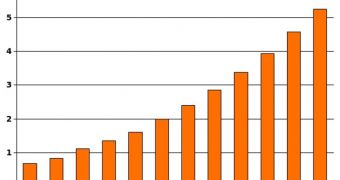Scientists in the United Kingdom have recently determined that children who suffer from autism tend to perform very poorly in tasks that rely on visual skills, including object recognition. The finding could have important applications in developing new ways of approaching this condition.
University of Bristol experts say that, for these kids, finding common objects in common situations is a lot more difficult than for health individuals. Some of the new findings go up against established data.
One of the most important skills that a child needs to develop in order to achieve independence as an adult is that of finding objects within an environment in real-life situations.
While most of us never give such activities a second thought, things are a lot more complex for autistic individuals. This is weird, considering that past investigations have demonstrate an outstanding visual search skill in patients suffering from this disorder.
One of the main reasons why these differences appeared between studies, experts say, is that past investigations had tested the kids in controlled conditions inside research labs.
The most common approach was put objects on top of a table, and have the kids look for them. But the new work is the first that tested for this ability in children placed in more real-world situations.
In the new experiment, 40 children (20 with autism, and 20 without) were placed inside a test room that had buttons on its floor. The kids had to press them in order to discover a hidden target on the illuminated floor. The target appeared more on one side of the room than the other.
One of the prevailing theories in autism today is systematizing, which basically implies that autistic kids are more sensitive to regularities and patterns within each system.
If that were true, then the young patients should have figured out that the targets appeared for the most part on a single side of the room. However, this realization was not found in the tested children.
In fact, the UB researchers said that the autistic kids were more likely to search in chaotic patterns, and to be less efficient overall than healthy peers of comparable age and development.
“This research was only possible because of the unique research facility we have in Bristol and the support we have received from the MRC, BBSRC and ESRC who funded the basic science that underpins these new findings,” says UB professor Iain Gilchrist.
“The ability to work effectively and systematically in these kind of tasks mirrors everyday behaviors that allow us to function as independent adults, and this research offers an exciting opportunity to explore underlying skills that could help people with autism achieve independence,” adds Dr. Josie Briscoe.
Both experts contributed as authors to the new paper.

 14 DAY TRIAL //
14 DAY TRIAL //